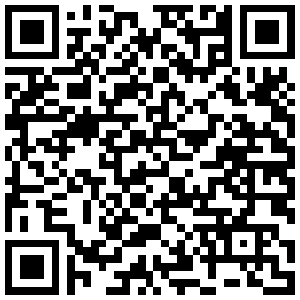In the age of social media, where fake news is spread online, the power of words can be especially powerful. Russia has established itself as a leader in this area, surpassing its previous standards in Ukraine.
The Russian media was filled with hate speech against Ukrainians long before the full-scale invasion began on February 24, 2022. The rhetoric has escalated to the point where there is strong evidence to accuse Russian propagandists of directly and publicly inciting genocide.
This architecture of propaganda is not new. In many previous cases, hate speech has been an integral part of the process of inflicting incredible cruelty on millions of innocent people. It was part of the tools used during the Holocaust, the war in the former Yugoslavia and Rwanda.
However, not every message that incites hatred and murder is a criminal offense under international law. In order to gather evidence and prove guilt, it is necessary to analyze the statements against very clear indicators.
“Direct and public incitement to commit genocide”, as defined by the 1948 Convention on the Prevention and Punishment of the Crime of Genocide, is a small, well-defined part of the broader phenomenon of propaganda.
The content must be aimed at the destruction of the group as such, the public and direct nature of the incitement must be determined. In addition, the intent and context must be taken into account.
It is important to note that incitement to genocide, as a so-called attempt to commit a crime, is a crime in itself. De facto genocide does not need to be proven, although charges not supported by such actual violence have never been brought before the International Court of Justice.
The threshold for proving incitement to genocide is very high. One of the main tasks for Ukraine is to prove that the statements are aimed specifically at the destruction of Ukrainians as a nation, and not at the elimination of adherents of a particular ideology. The Genocide Convention covers only four categories: racial, ethnic, national and religious groups. All others, such as political, cultural and gender groups, fall under crimes against humanity.
Precedentes in Rwanda are examples of how propagandists can “create a particular state of mind” and “inflame minds” through methods such as dehumanization and the blurring of boundaries between combatants and civilians. Russian manipulations were both historical - denying the right of the Ukrainian nation to exist - and religious, when the war was portrayed as a sacred duty.
The incitement must be perceived by the audience as a call to "destroy the group" and be clearly understood by the target audience as such.
This call can be direct and at the same time hidden. For example, in Rwanda, the widespread phrase "cut down tall trees" was an allusion to the tall stature of the Tutsi tribe. In 1994, in just 100 days, Hutu militants killed about 800,000 Tutsis and Hutus who supported them.
The key role here is played by the context. Outside Rwanda, the call to cut down "tall trees" would not be perceived in the same way. Therefore, when collecting evidence, not only legal, but also psycholinguistic analysis is important to determine how clearly the audience understood the statement. It is also necessary to analyze how real and immediate the risk of genocide may be.
The call must also be public, with unlimited access to the audience. For example, if the call for genocide was made at a conference in front of invited guests or in a closed Telegram channel, this is not a crime of incitement to genocide. The size of the audience does not matter; it can be a blogger with 200 followers or a writer whose article was read by several million people.
The most difficult thing to prove is intent. Objective criteria are needed, mainly the context and content of the statements. For example, if during a war someone calls for the killing of Ukrainian children so that the Ukrainian nation ceases to exist, then the intent is clear.
We should not over-idealize the situation regarding who can be held accountable. No legal system has the resources to imprison every blogger with 100 followers. It is important to be strategic and prioritize.
But there is a real opportunity to hold journalists, politicians, media owners, and religious figures accountable, using the Ukrainian judicial system, universal jurisdiction, and the broad capabilities of the International Criminal Court (ICC).
Currently, two non-profit organizations - the Ukrainian Legal Advisory Group and the Crimean Human Rights Group - are working together to collect relevant evidence from Russian media. I am a co-initiator and coordinator of this project.
First, a specially designed chatbot searches for propaganda, then tracks and filters legally significant information. To do this, we developed an algorithm for searching for relevant evidence using OSINT tools. Next, a lawyer and a psycholinguist verify the collected information and place it in a special archive that stores all the necessary metadata so that there is a potential opportunity to use the content as evidence.
It is extremely important that we learn lessons from previous conflicts. After Rwanda, the international community’s attention was focused on the spread of hatred through the media. Romeo Dallaire, who led the UN peacekeeping mission in Rwanda during the genocide, said: “I still believe that things would have been different if we had had the opportunity to comprehensively monitor the local media from the very beginning.”
Genocides do not happen suddenly. They are built on a solid foundation of hatred. Propaganda and incitement prepare the ground for this most heinous of crimes, and we ignore it at our own peril.
This publication was prepared as part of the Voices of Ukraine project, which is implemented with the financial support of the Foreign and Commonwealth Office (FCDO) of the United Kingdom
Anna Vishnyakova,
Lawyer in the field of international criminal law,
Ukrainian Legal Advisory Group

